A lot of folks have asked me about how the domain migration from seomoz.org to moz.com has gone after the past few months. Ruth Burr, who runs our in-house SEO, did a great job of sharing some details in her blog post on Surviving the Perfect Storm of Site Changes and her more in-depth webinar on Lessons from the Moz Transition. Still, I think we can be even more transparent by sharing some screenshots from our Google Analytics account.
I’ll start with a graph showing all site traffic to Moz properties from January-July:
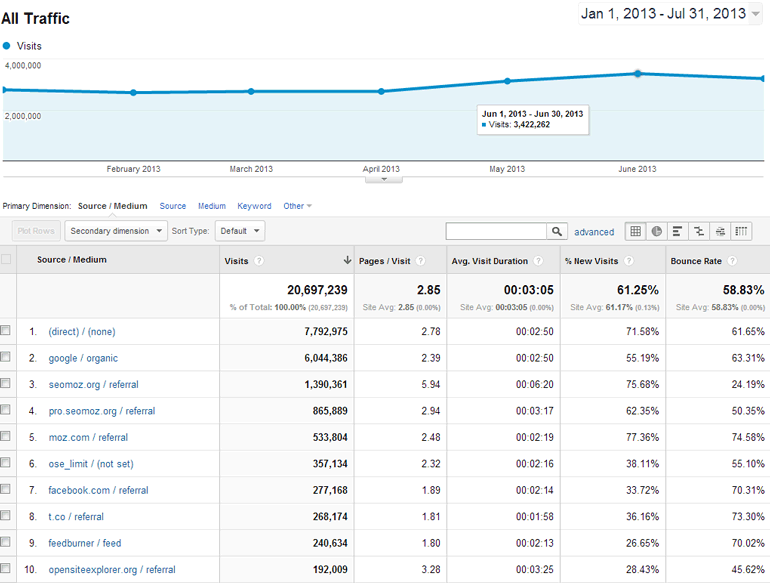
From here, I’m going to split up the graphs into two distinct time periods, one before launch, and one just after:
Graph A) From February 26 – April 30th (64 days)
Graph B) From May 29 – July 31st (64 days) – note that the Moz launch & domain redirect itself was May 29th
Here’s Graph A for all traffic, showing some details about visits, uniques, pageviews, etc:
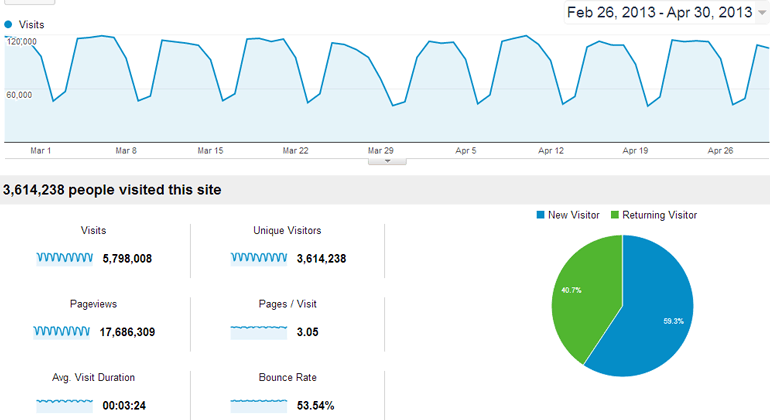
And here’s Graph B for all traffic, showing the same data:
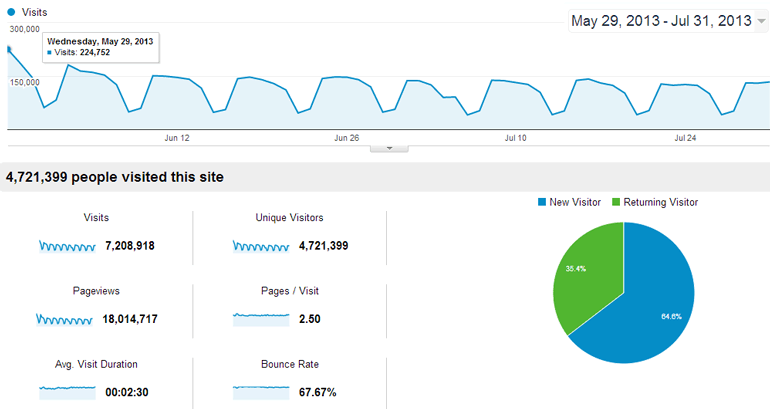
As you can see, there’s a lot more traffic in the post-Moz-launch period, but a considerable amount is new visitors checking out the site for the first time (vs more long-time, loyal visitors), and hence the avg duration, bounce rate, pgs/visit, etc. all reflect the attributes of this newer visitor group.
Next up, let’s look just at Graph A’s search traffic:
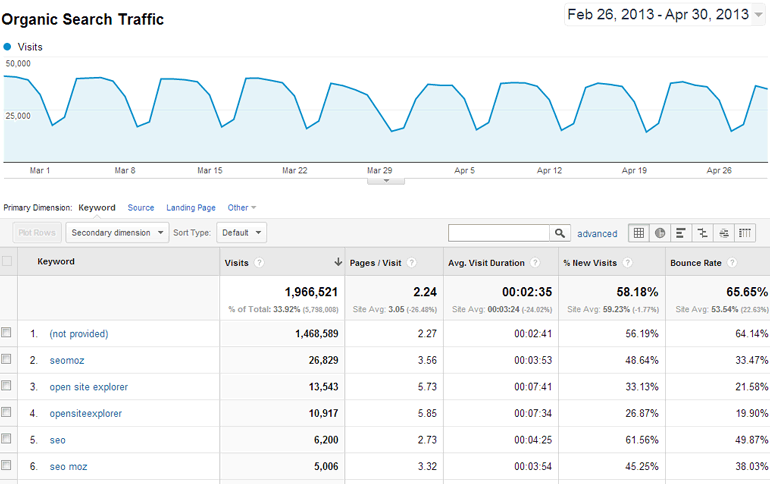
Compare that to Graph B’s search traffic:
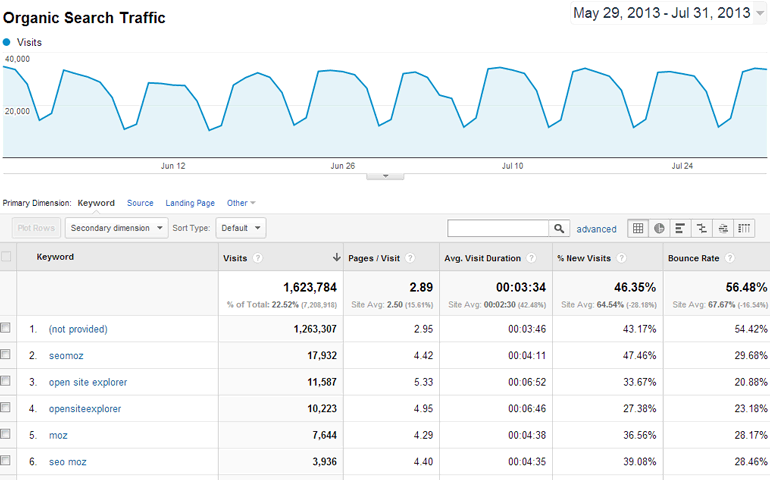
The trend is pretty clear – search is sending considerably fewer visits (342,737 fewer to be precise). Some of that may have been hidden referrers from some mobile browsers (more on that and the subsequent return of this data recently from RKG here), but it’s probably not a huge difference between the two periods. The good news is that search visits to Moz.com seems to be recovering. The lowest week was ~2 weeks after the switch, and with the exception of the US 4th of July holiday, the trend has been steadily improving since (albeit slightly).
NOTE: Weirdly, it appears that the keyword “SEO” did not actually lose rankings/send less traffic after the domain migration, but before it. On ~March 16th, we fell a couple spots in the rankings, and have stayed between the 4th-6th position whereas we previously hovered between 2nd-3rd (traffic sent from the term dropped from ~250/day to ~75/day). Several of our other keyword rankings that contained the word “SEO” did drop specifically after the migration, though a few have recovered. I’m not certain we can draw a conclusion about how much the “SEO” in the seomoz.org domain name mattered based on this data.
Next I’ve got Graph A’s direct traffic:
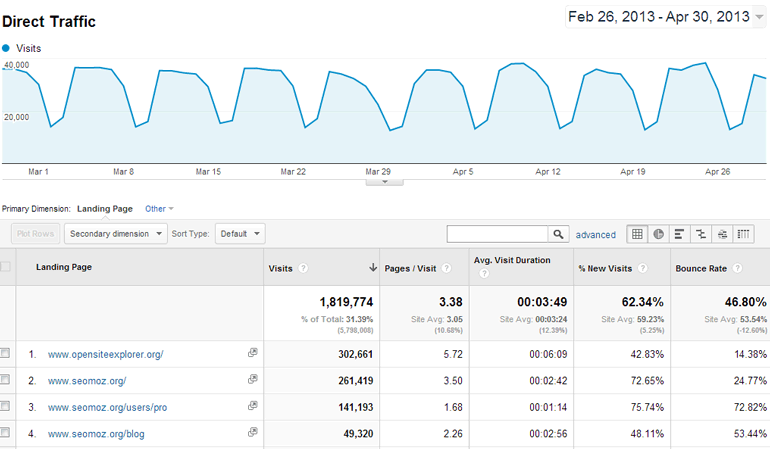
And the comparison to Graph B’s direct traffic:
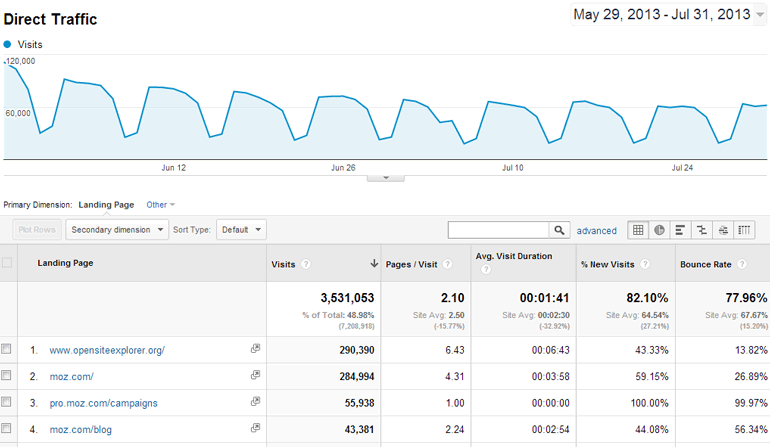
Direct looks massive, but there’s some oddness hidden in there, including a couple times we made the frontpage of Hacker News, which sends tens of thousands of visits but reports no data on the source (so it, tragically, gets counted as “direct”). The same holds true for some social and search referrers. Nonetheless, it’s clear that Moz.com is getting a lot of folks going direct, and to fairly similar URLs (OSE, the homepage, the blog). One interesting item to note is that the PRO subscriber traffic (which used to all go to /users/pro) is split between a few different URLs now, so a direct comparison isn’t possible.
Rather than split out social sources and referring links, I opted to grab the more simplistic referring traffic. Here’s Graph A’s referring domains:
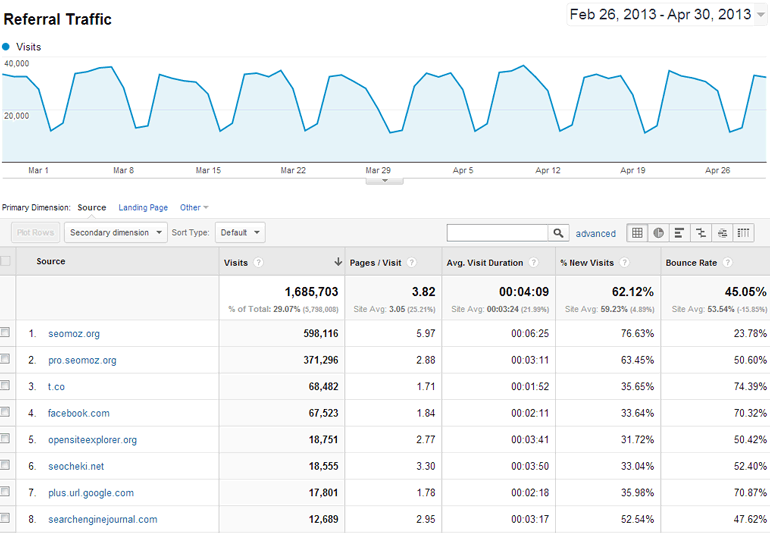
And a comparison to Graph B’s referring domains:
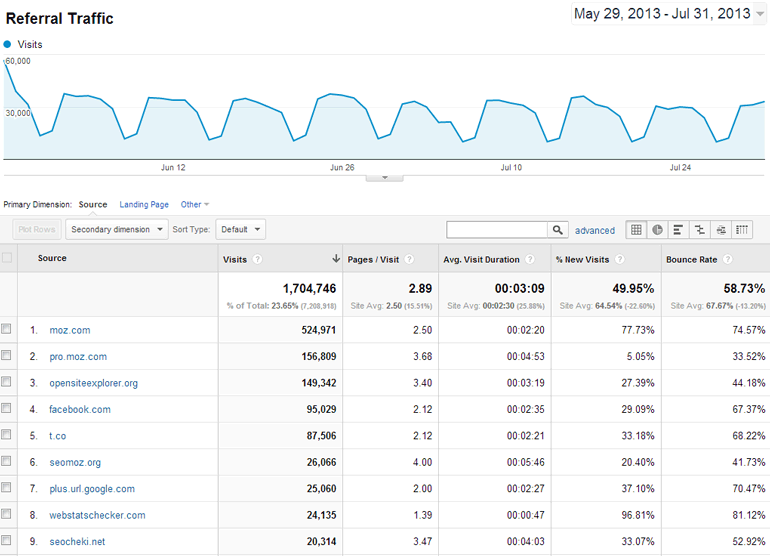
There are lots of similarities here, but a particular interesting item to note is that Twitter and Facebook have both gone up significantly. Facebook also surpassed Twitter for the first time ever as our leading social referrer. Google+, meanwhile, has also grown dramatically.
BTW – the internal referring URLs (pro.seomoz.org and pro.moz.com, etc.) are a result of how our GA profiles are set up, not because we don’t have tags on pages. Ruth, Matt, and Justin know more about why exactly this is going on and might chime in via the comments to explain (no pressure gang!) 🙂
The last chart I want to show is this blog’s (moz.com/rand ONLY) Google search traffic for the January-July period because it highlights something uniquely interesting:
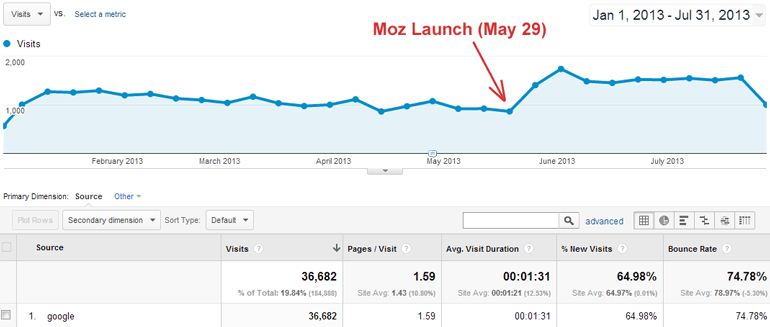
Folks often wonder how much domain authority matters, and this graph would suggest it still has a strong influence, not just in moving content from a not-so-strong domain over to a strong domain, but also when moving a powerful domain over to a less established one. The rankings for nearly all of the keywords I monitor (and plenty I didn’t) on moz.com/rand went up, and so did search referrals, upon the transition of the old seomoz.org site over to moz.com. We’d tested this before by launching an iteration of our Beginner’s Guide to SEO on a subdomain of seomoz.org and then migrating it to a subfolder (rankings and search referrals shot up). But I’ve never been able to test whether migrating an existing domain to another would positively impact the non-moved-over content until now.
I’m sure there’s lots of analyses and insights that others will have, and questions, too. Just please be forgiving if I’m not able to answer all of these right away, and please be careful not to draw conclusions that are too broad based on this single experience.
